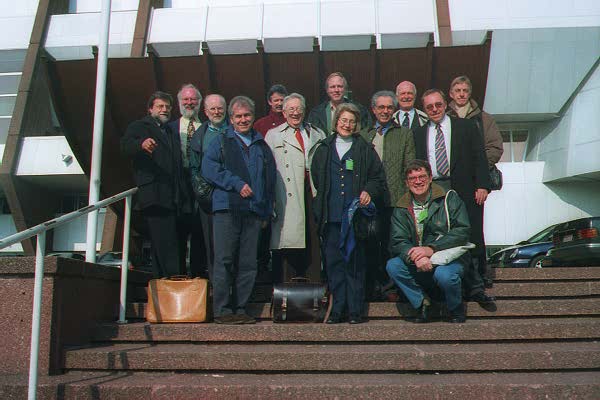The European Sourcebook Group is a group of experts that produces on a regular basis the European Sourcebook of Crime and Criminal Justice Statistics. The seventh edition (preliminary publication) has just been published! A final publication will take place by the beginning of 2025, covering more countries.
A short history of the European Sourcebook
The first European Sourcebook project started in 1996. In that year the Council of Europe established a committee to prepare a compendium of crime and criminal justice data for its member states. Information was collected from 36 European countries covering the period 1990 to 1996. It included both statistical data and information on the statistical rules and the definitions behind these figures. This resulted in the publication by the Council of Europe of the first European Sourcebook in 1999. Also a ‘Key Findings’ bulletin was published in 2000 and an issue of the European Journal on Criminal Policy and Research (Vol. 8, No. 1, 2000) was mainly devoted on some results of the Sourcebook data.

A second European Sourcebook project sponsored by the governments of Switzerland, United Kingdom and the Netherlands was completed and the findings were published in December 2003 by the Dutch WODC in their publications series (nr. 212). The publication reports on criminal justice data for 40 European countries covering the period 1995 – 2000. A special double issue of the European Journal on Criminal Policy and Research (Vol. 10, Nos. 2-3, 2004) was devoted to the results of the Sourcebook data.
In June 2006 the third edition, sponsored by France, the Netherlands, Switzerland and the United Kingdom, was published again in the WODC publication series (nr. 241). This edition is a limited one: not all tables were updated. It covers the years 2000 – 2003 for 37 countries.
The fourth edition, covering the years 2003-2007. The fourth edition is an extended update of the third edition and covers the years 2003-2007. In-depth analyses are presented for the year 2006. The basic structure of five chapters – offences and offenders known to the police, prosecution, convictions and sentences, corrections including non-custodial sanctions and survey data – has been maintained. However, several chapters were revised and extended in various respects.
The 5th edition of the European Sourcebook of Crime and Criminal Justice Statistics (Aebi, Akdeniz, Barclay, Campistol, Caneppele, Gruszcynska, Harrendorf, Heiskanen, Hysi , Jehle et al. (2014) European Sourcebook of Crime and Criminal Justice Statistics. 5th ed. Helsinki: HEUNI Publications Series 80) was published in 2014, and a revised second printing from 2017 is available for free download on the European Sourcebook Website (here). In addition, the database, including police, prosecution, court and prison statistics from 40 European countries, has been made available for researchers through the same website, run by Marcelo Aebi and hosted by the University of Lausanne. Furthermore, in-depth analyses were conducted by members of the European Sourcebook Group and published in a special issue of the European Journal on Criminal Policy and Research on “Crime and Criminal Justice in Europe” (2018). In a European comparative perspective, this issue includes articles on the attrition process within the criminal justice system, trends in police recorded crime, special juvenile criminal justice statistics, development of community sanctions and measures, as well as the development of homicides.
The 6th edition: LINCS (Linking International Criminal Statistics) project  For the sixth edition, the EU/CoE co-founded the LINCS project (Linking International Criminal Statistics). It was an 18-month project that aimed at linking SPACE statistics with the criminal justice statistics collected by the European Sourcebook members. The expected outcomes of the exercise were: to examine (a) what influence the crime trends observed in the countries had on the prison population rates, and (b) what influence the legal system of each country had on prison statistics, particularly the legal definitions of offences. Based on the collected and collated criminal justice and prison statistics, two longitudinal studies were to be produced: (a) a report on differences in the legal definitions of offences across Europe, which would allow a comparison of the prison population by offence observed on the continent; and (b) a report on trends in conviction statistics since 2005 by type of offence, which would allow a comparison of the trends observed in the composition of the prison population. The first meeting of the LINCS project, with the participation of national correspondents from all the member states of the Council of Europe, took place at the premises of the CoE in Strasbourg on 16 and 17 April 2018.
For the sixth edition, the EU/CoE co-founded the LINCS project (Linking International Criminal Statistics). It was an 18-month project that aimed at linking SPACE statistics with the criminal justice statistics collected by the European Sourcebook members. The expected outcomes of the exercise were: to examine (a) what influence the crime trends observed in the countries had on the prison population rates, and (b) what influence the legal system of each country had on prison statistics, particularly the legal definitions of offences. Based on the collected and collated criminal justice and prison statistics, two longitudinal studies were to be produced: (a) a report on differences in the legal definitions of offences across Europe, which would allow a comparison of the prison population by offence observed on the continent; and (b) a report on trends in conviction statistics since 2005 by type of offence, which would allow a comparison of the trends observed in the composition of the prison population. The first meeting of the LINCS project, with the participation of national correspondents from all the member states of the Council of Europe, took place at the premises of the CoE in Strasbourg on 16 and 17 April 2018.
